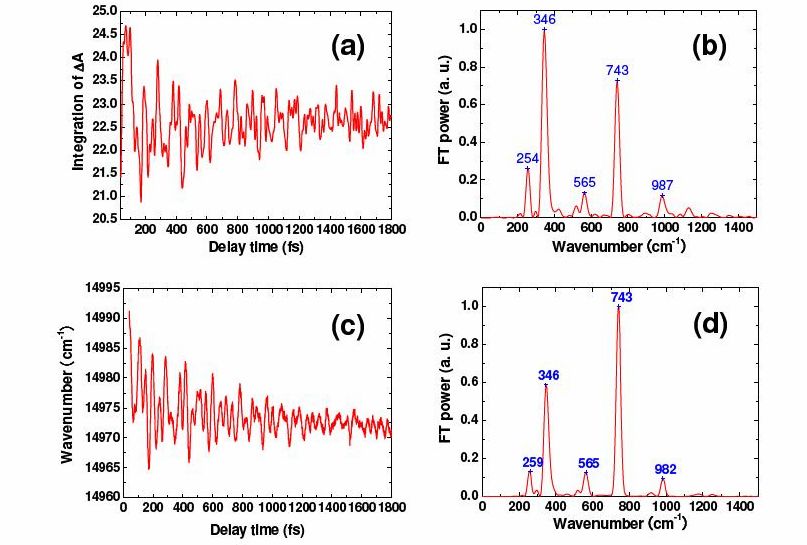Chlorophyll a (Chl-a) plays an essential role in the energy transfer and charge separation in the photosynthetic unit, hence Chl-a and Chl-containing proteins have been extensively studied. Among these studies, applications of laser pulses with durations from several tens to 100fs have been reported. On the other hand, the vibrational structure of Chl-a has been obtained by resonance Raman spectroscopy, spectral hole-burning, and fluorescence line-narrowing techniques, respectively. However, the vibrational information of its most interesting Qy-band is usually studied at very low temperature (~4K) due to the temperature requirement of these vibrational methods and disturbance by intense fluorescence in Chl-a solution. Vibrational result at physiologically relevant temperature has not been elucidated, and no study has yet been reported on the coherent molecular vibration induced by impulsive excitation with a sufficiently short pulse.
Researchers from State Key Laboratory of High Field Laser Physics, Shanghai Institute of Optics and Fines Mechanics, Chines Academy of Sciences (SIOM, CAS) experimentally studied broadband real-time dynamic vibronic coupling in Chl-a using few cycle laser pulses of 6.8fs duration and a 128-channnel lock-in amplifier. They used a 6.8fs laser as the light source of the broadband real-time vibrational spectroscopy to study the coherent molecular vibration in Chl-a. Due to advantages of ultrafast excitation and broadband detection, the probe wavelength dependence of the vibration amplitude in Chl-a was detected with high sensitivity.
They calculated and explained the electronic transition energy change in terms of the difference in the equilibrium positions of potential curves between the ground state and the excited state. Due to the temperature limitation of conventional vibrational spectroscopic techniques in the study on Chl-a and the complexity of the temperature dependent characteristic of Chl-a, its Q-band vibrational information at physiologically relevant temperature is always scarce and desirable. The room-temperature information obtained here is promising to reveal the hidden features of Chl-a at physiologically relevant temperature directly. This work was newly published in recent issue of OPTICS EXPRESS . 19(23). 2011:22485.
 |
| Fig. Probe delay time dependence of the integrated _A signal intensity in the Q band (a), the electronic transition energy (c), and their corresponding FT power spectra (b) and (d),respectively.(Image by SIOM) |